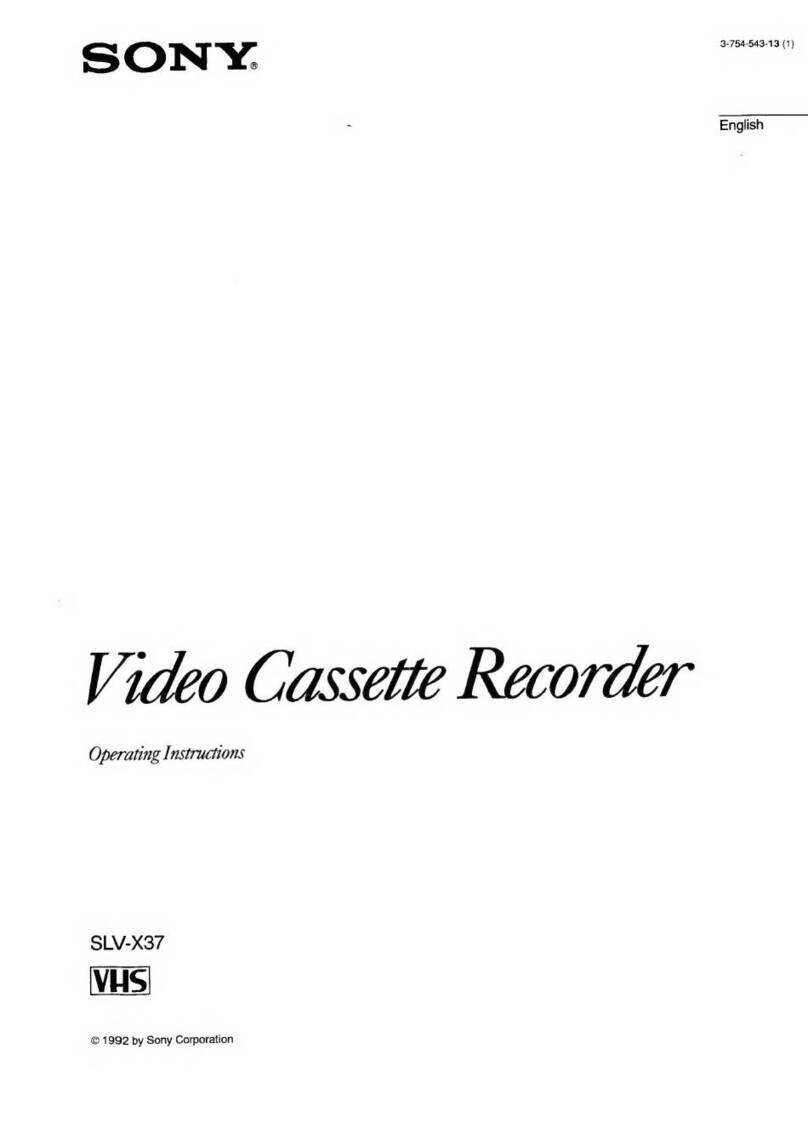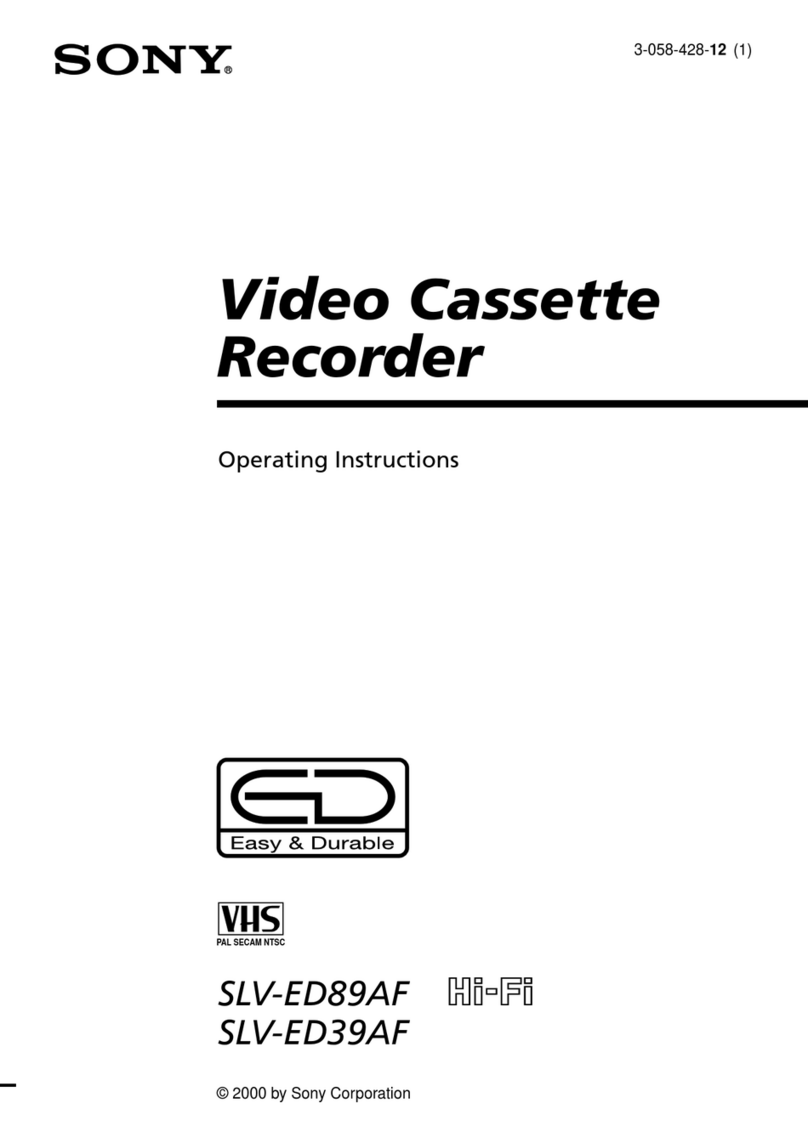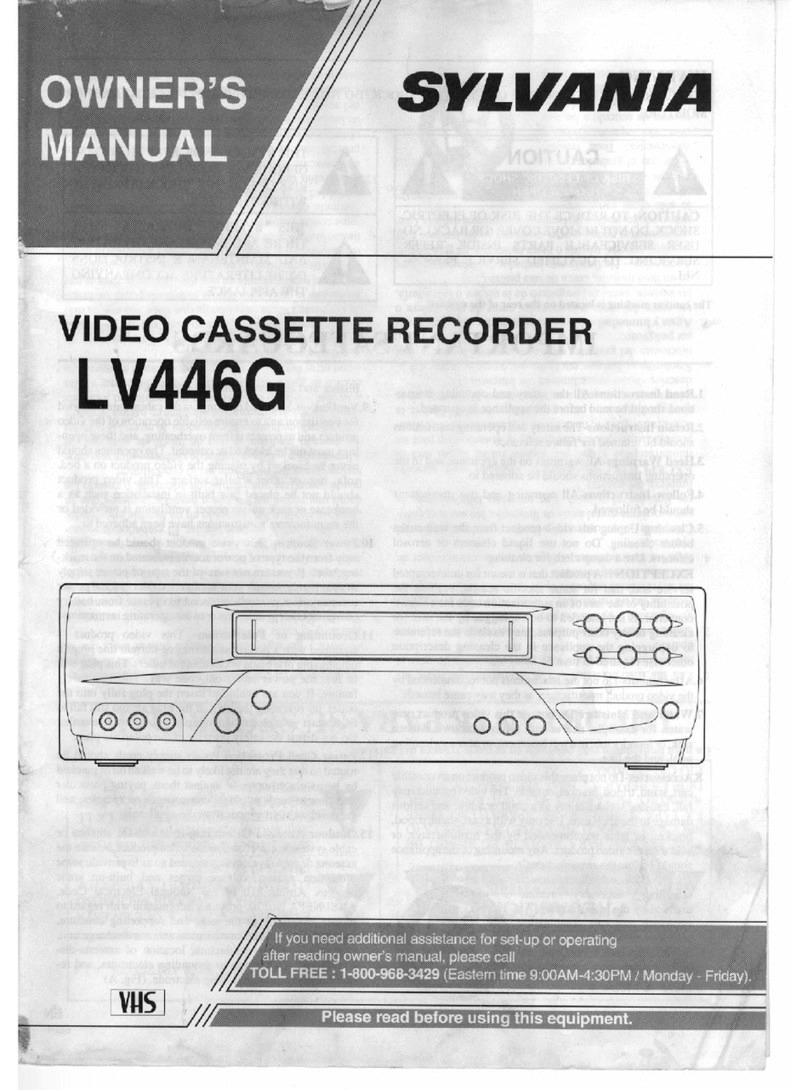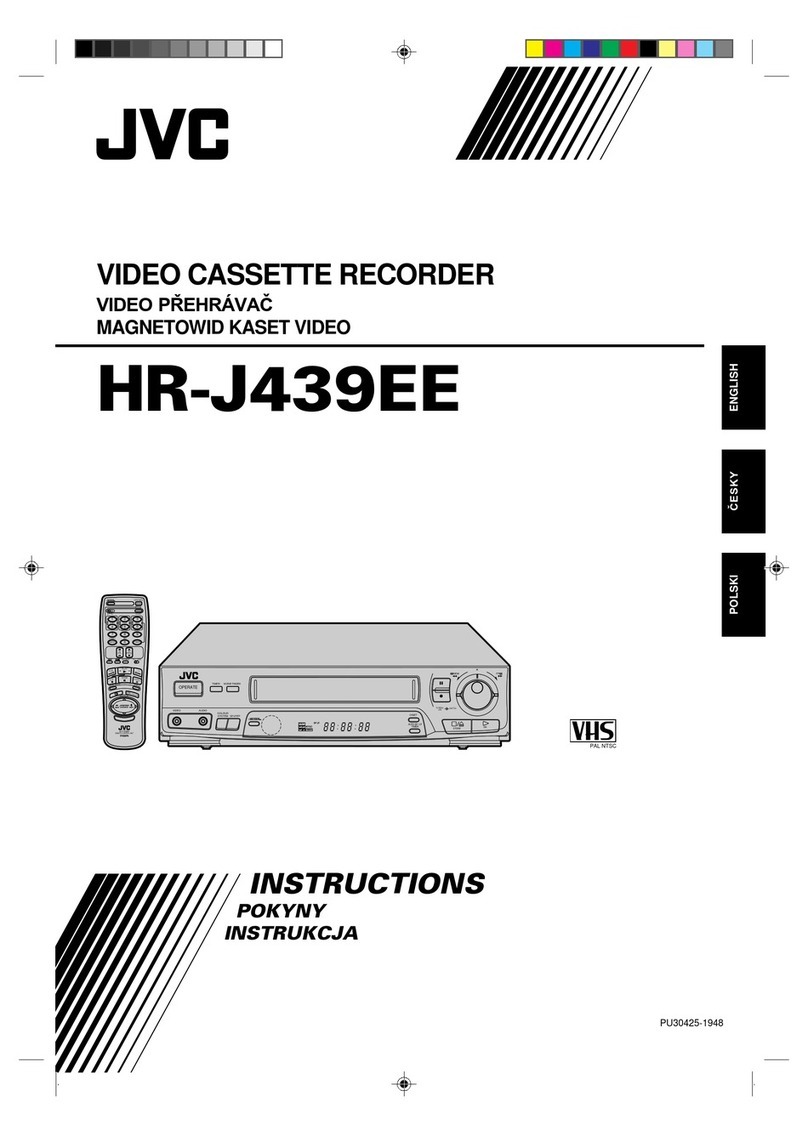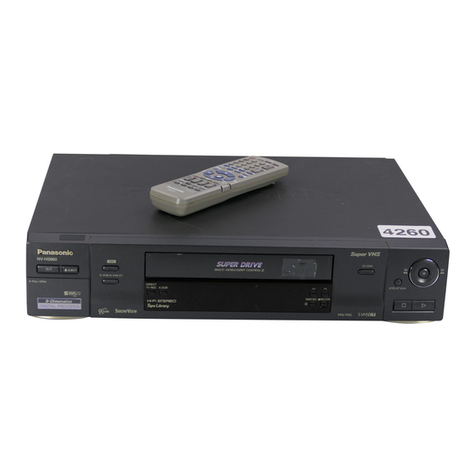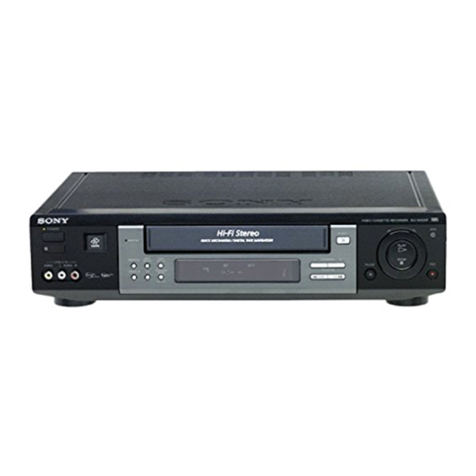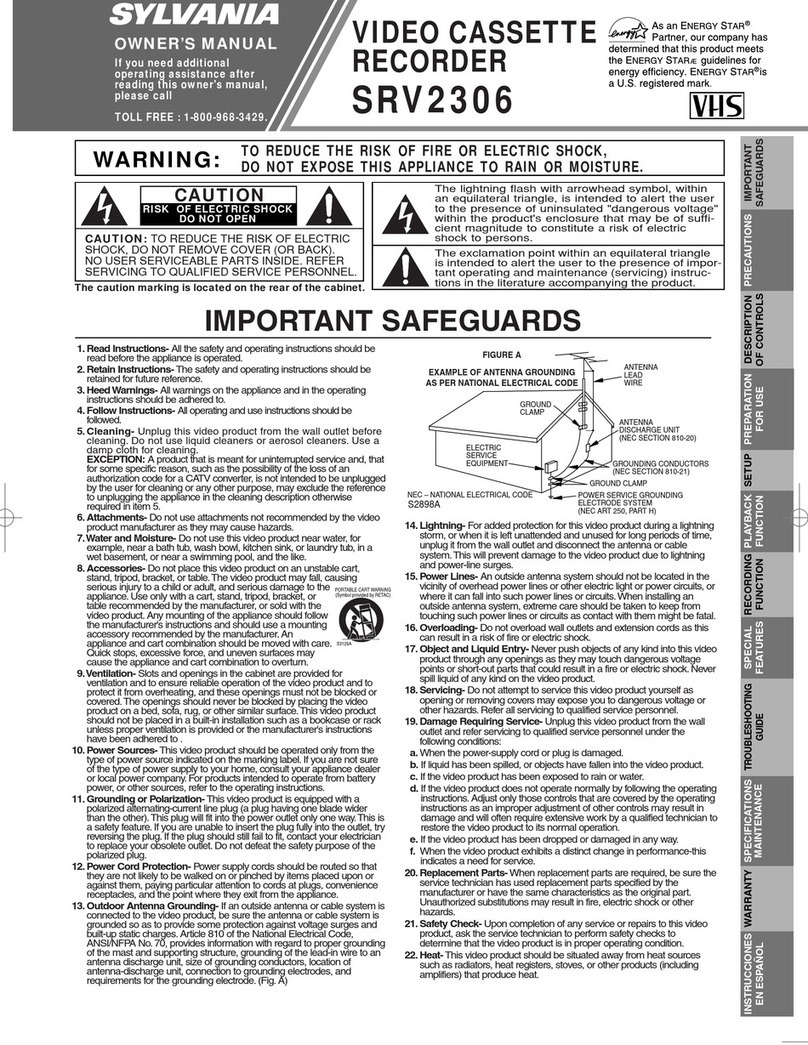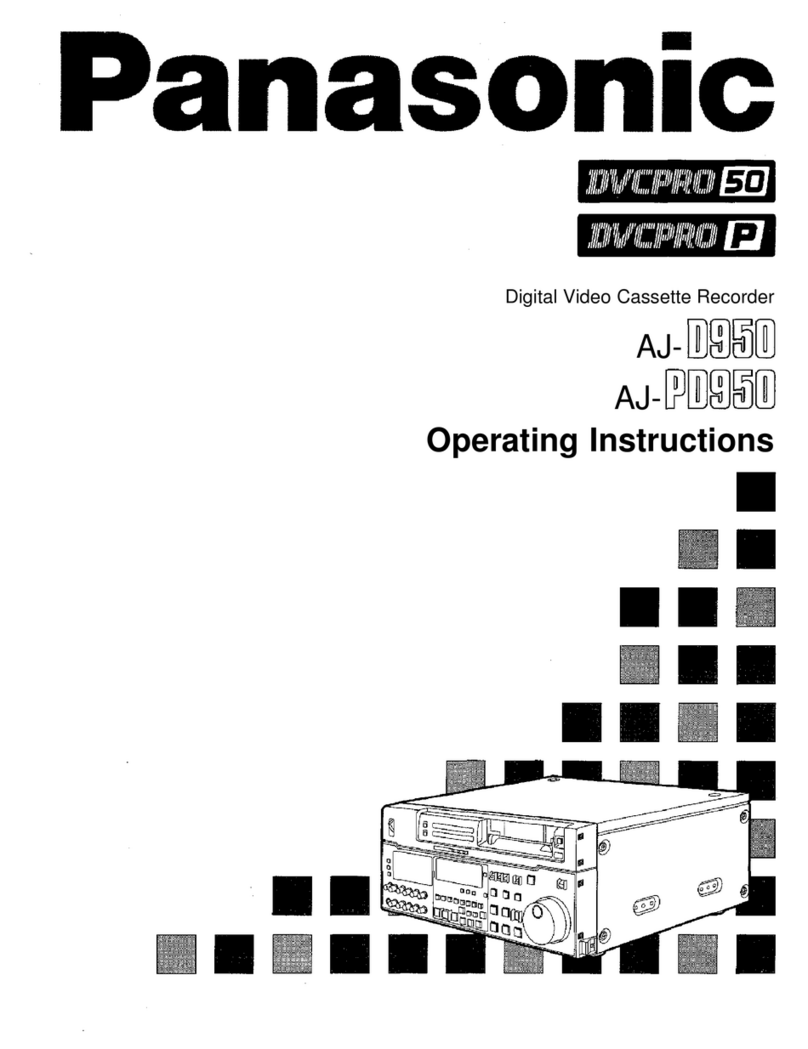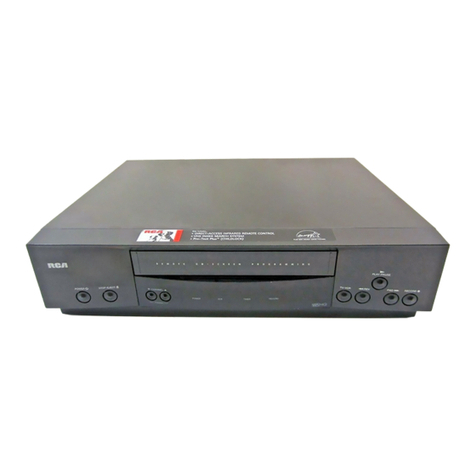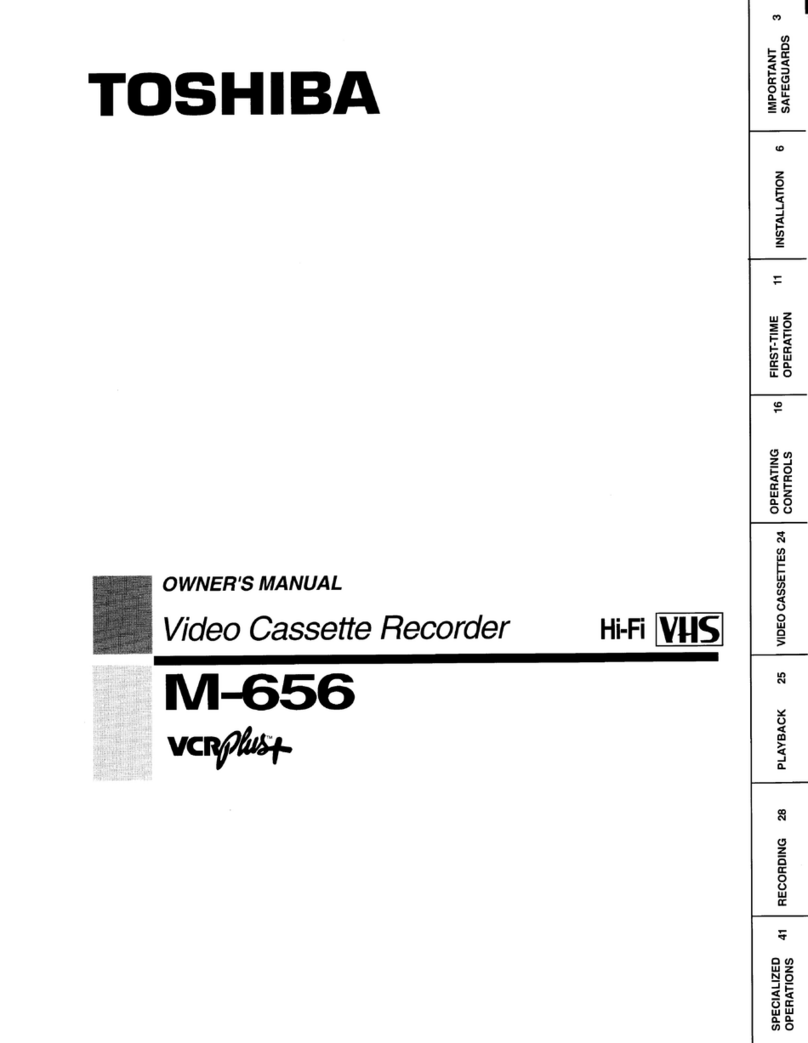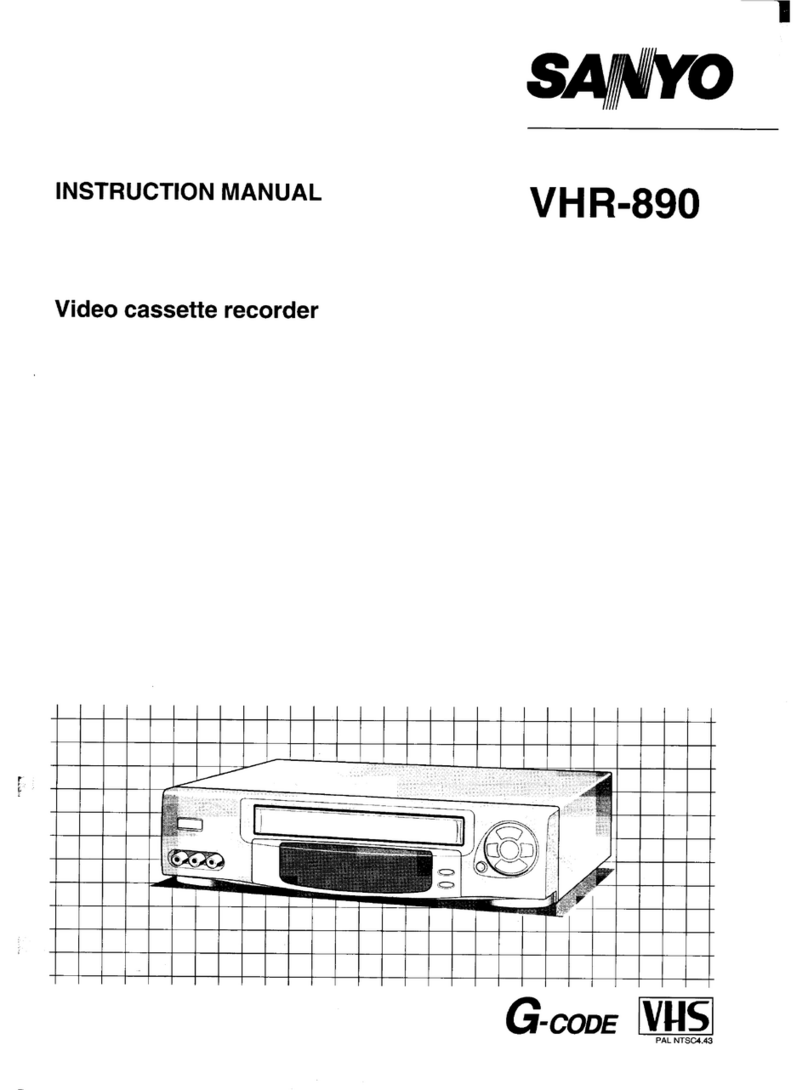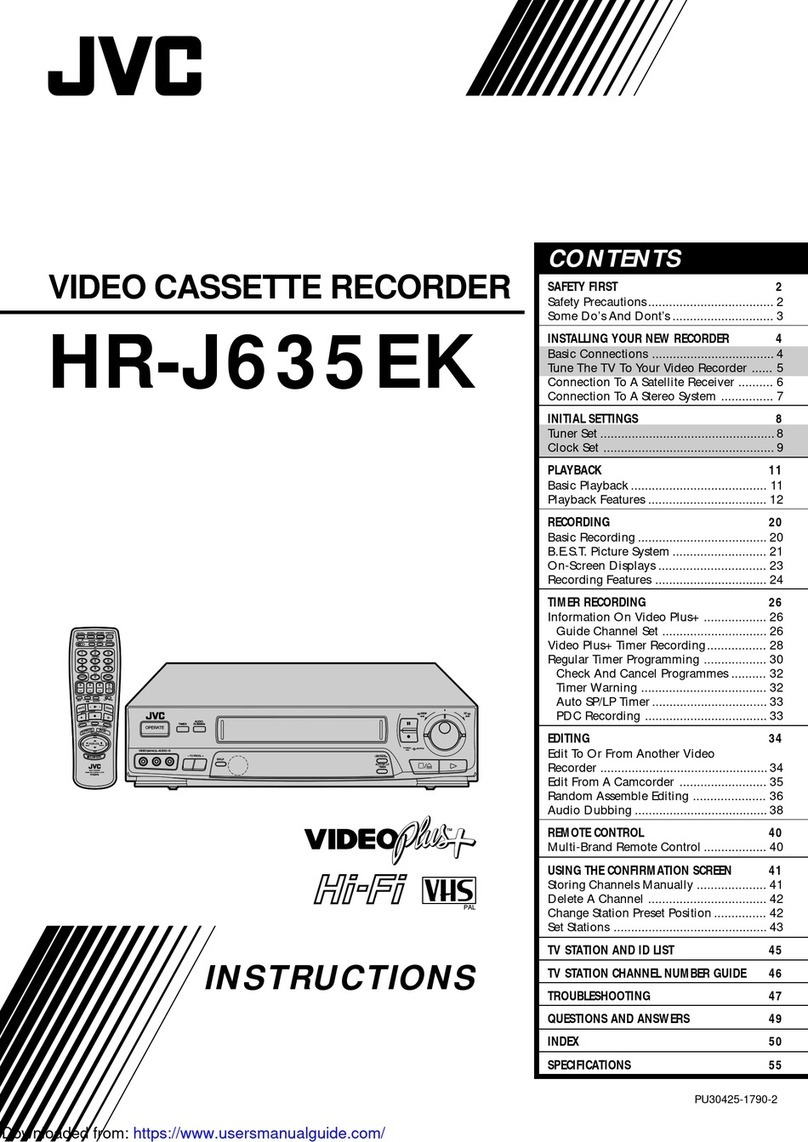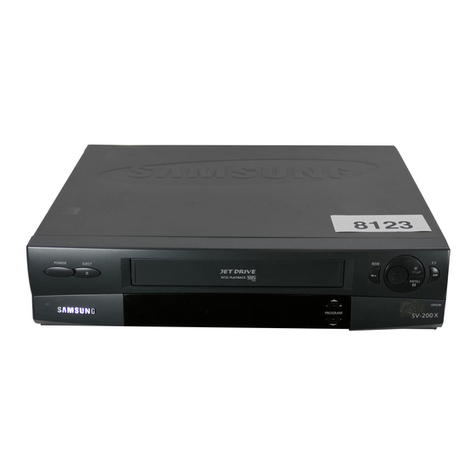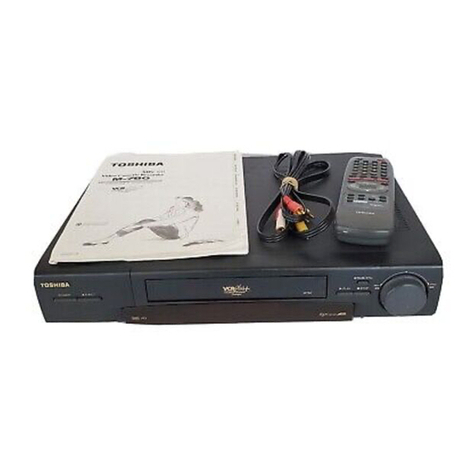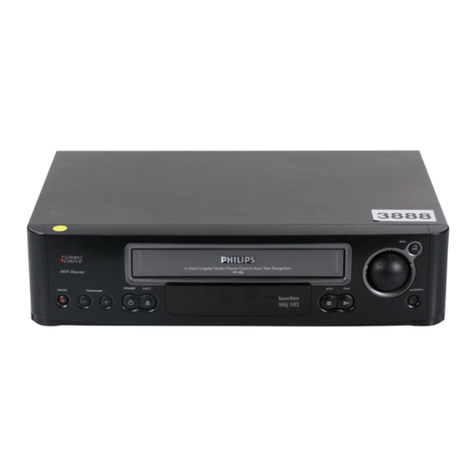Brenell Mark 610M User manual

•.
0
-~--"'*·J
...
.,
...
..,.
••
0
...
_
•
The
recording
requirements
of
many
people
have
not
developed
beyond
the
elementary
stages
of
making
the
recording,
rewinding
the
tape
and
then
listening
to
the
recorded
programme,
but
others
are
far
from
satisfied
with
such
a
procedure
and
the
ability
to
hear
the
recording
as
it
is
made
is
an
essential
facility. This
latter
system
must,
of
course,
employ
an
extra
head
and
amplifier
for
Playback
purposes
thus
adding
to
the
cost
of
the
machine
-an
additional
cost
which
is
worth
while
in
order
to
know
immediately
the
quality
of
the
recording.
Brenell
have
found
such
machines
to
be
in
great
demand
so
it
is
not
surprising
to
find in
their
range
of
new
equipment
a
superb
model
giving such a
facility-and
in
addition
this
model
(MK
6
Type
"M")
has
switching
provided
to
enable
the
recorded
material
to
be
immedi~tely
compared
with
the
programr:~e
material
being
fed
to
the
recorder
(a
system
known
as
A/B
comparison)
.
In
addition
to
facilities
for
record
'
;1g
from
microphone,
Radio,
etc., special
compensation
circuits
are
incorporated
in
the
recording
amplifier
to
enable
recordings
to
be
made
directly
from
magnetic
and
ceramic
gramophone
pickups
(normally
one
has
to
feed
pickups
via
separate
pre-amps)
and
mixing
facilities
between
microphone
and
pickup
is
possible
by
means
of
a
cross-fade
system
(a
single
control
fades
out
one
signal as
it
fades
in
the
other).
Mod.
ern
transistors
and
techniques
have
enabled
high
powered
amplifiers
to
be
designed
at
a
fraction
of
the
weight
of
their
valved
counterparts,
it
is
not
surprising
therefore
to
find in
this
superb
portable
recorder,
a
power
output
of
15
watts
available.
Wide
range
Bass &
Treble
control
circuits
are
also
incorporated.
Whilst
we
think
principally
of
thi_s ma-
chine
as 3 fa,
pe
recorder,
it
must
be
remembered
that
its
amplifier
may
be
used
independently
of
the
recording
facilities
for
reproduction
of
Radio,
Gramophone
and
microphone
signals in
the
home
or
hall
(Public
Address).
The
tape
deck
incorporated
in
the
Brenell
MK
6
"M"
rL
_order has 3
motors,
4
tape
speeds,
pausing
mechanism,
digital
revolution
counter,
end
of
tape
(or
tape
breakage)
stop
and
3
heads
of
the
highest
quality.
The
low
wow
and
flutter
content,
wide
frequency
range
and
excellent
s:gnai
to
noise
ratios
are
all
important
factors
which
make
this
machine
so
technically
superior.

TRANSPORT
SYSTEM
(DECK)
3
outer
rotor
motors
(Hysteresis
Synchronous Capstan Drive
for
utmost
speed Stability).
Large Dynamically Balanced Flywheel
(for
minimising
wow
and
flutter
in
the
transport
system).
4 Tape
Speeds-
15
,
7t,
3i
and
It
i.p.
s.
Reel
sizes-
up
to
Btin. (21 ems.)
diameter.
Heads-
3 heads (Erase, Record, Replay), t
track
mono.
Tape
Tension-
Light friction brake
(adjustable
from
top
of
deck
,
to
ensure
correct
tension
for
call reel sizes).
Fast Rewind +
Wind-on
times -
under
60
sees.
for
I200ft. (360m.) tape.
Braking System -Positive, reliable system, self compensating
with
lining
wear
.
Pause Mechanism -Robust, simple
to
operate
, lockable.
Position Indicator -4 digit revolution
counter.
Push Button cancellation.
Wow
and
flutter
measured on
Gaumont
Kalee
wow
and
flutter
me:
ter.
15
i.p.s. less
than
0.05%
7t
" " 0.08%
3!
, ..
Ct.Ol%
End
of
tape
or
tape
breakage
auto-stop
.
It
,
..
0.
12
%
TAPE AMPLIFIERS
Separate
record and replay amplifiers.
Record Amplifier .:-
Inputs
for
magnetic Pickup.
Ceramic
Pickup.
Mi
crophone
(Sensitivity
100
microvolts-
overload 55dB).
{Optimum
mic. impedance 200-'250
ohms).
Auxiliary Signals (Sensitivity 5
millivolts-
impedance 250K
ohms)
.
f.
Ul NAC.., 4 HV
47
/'( ,
(Radio-
Hi
Fi
Pre-amps,
etc.)
I
P.
v ' c
eJI.-'
/6
-I I r '-
Compensation
for
pickups selected by single push
button.
0 rw ·
,_,
-t
Mixin&
of
inputs-
by pressing
appropr
i
ate
buttons,
mic and
pickup
signals may be mixed
for
recordine and P.A. purposes.
Record Level
Metering-
A laree, edgewise scaled, illuminated
~
eter
enables precise recording levels
to
.
be
maintained.
" Replay
Amplifier~:-
Power
Output
-
15
watts
into
8
ohms
@
1%
distortion
.
8
watts
into
15
ohms @ I%
distortion.
Bass
Control
-IBdB
to+
18dB@
50Hz (
c/s).
Treble
Control
-15dB
to
+
15dB
@ 12KHz
(Kc/s).
Output
Sockets
for
Ext.
Speaker
(8
to
15
ohms)
Type BS666.
Ext. Amplifier (220mV from fully modulated
tape)
BS666
.
GENERAL
Frequency responses
(Record/Replay)
:-
15
i.p.s. (38cms.)
40Hz
to
22KHz
±2dB
.
7t
i.p.s. ( 19cms.) 40Hz
to
20KHz
±2dB.
3!
i.p.
s.
(9
.5cms.) 50Hz
to
15KHz
±3dB
.
1
f i.p.
s.
(4.75cms.) 60Hz
to
8KHz
±3d
B.
Signal
to
noise
ratio
-56dB
unweighted.
A/B
Switching -Provision
is
made
for
"off
the
tape"
monitoring
and
direct
comparison
of
recording with
the
original signal.
The replay signal level may be independently controlled by
the
A/B
balance
cont
rol
in
order
to
obtain
the
correct
replay level
at
all speeds
for
critical comparison
of
recorded signal with
the
original.
Internal
Speaker-
A high quality
speaker
is
fitted-this
will be automatically disconnected when
ext.
speaker
is
used.
Amplifier Tape Speed Compensation - 4 push
buttons
are
provided
to
enable
the
correct
recording and replay compensation
circuits
to
be
selected
. These
are
deliberately
not
linked
to
the
speed change switch
so
that
individual
requirements
of
operators
may be
met
. ·
STRAIGHT AMPLIFIER
By
pressing
the
"A"
button
the
preamplifier circuits
of
the
recording amplifier
(prior
to
recording compensation
circuits)
are
coupled
to
the
main amplifying circuits
of
the
replay amplifier,
thus
there
becomes available a versatile, powerful Hi-Fidelity amplifier
such as
Q,ne
would normally purchase as a
separate
unit
. The Specifications
under
these
conditions
are
as follows:-
Power
Output-
15
watts
into 8 ohms
for
0.02%
distortion.
8
watts
into
15
ohms
for
0.02 %
distortion
.
Input sensitivities
for
above
output
levels:-
Mic
. 2 millivolts
Mag. P.up 3 47K ohms
Cer.
160
1.5
megohms
Radio
95
, 250K ohms
Bass
Range@
50Hz
-18dB
to
+
18dB
.
Treble
Range@
12KHz
-15dB
to
+ 15dB.
Overall Frequency Response
(with
Bass and Treble
controls
to
central
(flat)
position):
±2dB
20Hz
(c/s)
to
30KHz
(Kc/s)
.
Signal/Noise Ratio
of
Straight
Amp. - Auxiliary position 78dB.
The
recorder
is
designed
for
vertical
or
horizontal
operation.
Si
ze
of
Cabinet-
171in. X 16lin. X Sin.
Weight-
37 lbs.
nett
.
-+le
""/
t;.
(
.,
(.)(...
'
'-
v
i+
u k
Brene/1 Engineering reserve the
right
to
alter
the specification as
modifications
are made.
Brenell Engineering· Co. Ljd.
231/235
~tPool
oad,
j:9"cttiil,'
./
Tel
,.
o.:
o~
O'f
827
;
''72.
I
z_
J?
(Q
f

I .
I
BRENELL
MARK
6
TYPE
"M"
AND
MARK
610
TYPE
"M'
'
TAPE
RECORDERS
.
Opera
ting Instructions
·'
THIS
MACHINE
IS
FOR
USE
ON
A.C.
SUPPLIES
ONLY
Mains Adjustment Plug
Befo1e
connecting
the
recorder
to
the
A.C.
maim
supply
check
that
the
mains
adjustment
plug,
situated
in
the
circular
recess
at
the
rear
of
the
cabinet,
is
sel
to
the
correct
position,
i.e.
·
Mains
Cable
240v for mains
of
22'0v to 250v
21
Ov
for mains
of
200v to 220v
115v for mains
of
100v to 125v
This is a
three
cored
cable
stored in
the
pocket
situated
near
the
carrying
handle.
To
this
cable
a
suitable
3
pin
plug
should
be
connected
as follows:
L~cing
the
Tape
Earth
pin
to
Yellow/Green
Live
pin
to Brown
Neutral
pin
to Blue
Fit
the
full reel
oftape
to
the
left
hand
spoolholder
so
that
the
tape
feeds
from
the
left·hand
side
of
the
machine
through
the
slot
between
the
head
covers
and
via
the
adjustable
tape
guide
to
the
empty reel which should
be
fitted
to
the
right
hand
spoolholder.
If
correctly
laced,
the
glossy
side
of
the
tape
will
be
facing
the
operator
and
the
tape
will
lie
between
the
heads
and
pressure pods
and
also
between
the
two pins
near
the
left
hand
tape
guide,
i.e.
in
front
of
the
auto
stop pin which
movesin
the
slot but to
the
pad
'5ide
of
the
pin
whic~
,
is
attached
to the erose
{L.H.) pressure pad
arm.
Care
~ho\,Jid
be
taken
to ensure
that
the
tape
does
not become twisted when
attaching
it to
the
empty
reel.
i.e.
the
coated
side
of
the
tape
must
face
the
hub. ·
Spool
R~taining
Sc~
Screws
are
supplied for
retaining
the
reels
of
tape
on
the
spool
holders.
It
is
advisable
to
fit
these
screws
even
though
the
machine
may not
be
used in
the
vertical
position.
Adjustable
Tape
Guide
(Mark 6 Type "M'i
only)
The
extreme
right hand
tape
guide
may
be
moved in
the
vertical
plane
in
order
.to
feed
the
Jape
to
the
take-up
reel
without
it
touching
the
edges
of
the
reel.
13-1

To
adjust,
hold lower
milled
edge
and
then
turn upper
edge
in
an
anti-
clockwise (unscrewing)
direction.
You will
then
have
twp sections
which may
be
relocked
at
the
height
necessary
to feed
the
tape
centrally
to
the
.
take-up
reel,
by
holding
the
lower
section
and screwing
the
upper
section
hard
against
it.
Deck
Switches
The two·
large
knobs
control
the
Fast
Wind,
Fast Rewind, Record and
Replay functions
of
the
tape
deck
whi
1st
the
small knob
is
used for
the
selection
of
the
tape
speed.
Speed
Changing
The switch
provided
has
three
positions but
the
tape
speed
wi
II
depend
also
upon
the
size
of
capstan
sleeve
in
use.
If
the
head
covers
are
removed
(Pl
r
'l
Fit)
one
may observe
the
brass
capstan
sleeve
to
the
right
of
the
tape
heads.
The
sleeve
is
a
tight
fit
over
the
spindle
and
is
retained
in position by means
of
a grub screw (see
side
of
capstan
sleeve).
Two
sleeves
are
provided
with
each
recorder
normally
the
larger
sleeve
is
fitted
and
the
smaller
sleeve
is stowed
inthe
pocket
in
the
top
of
the
cabinet.
When
the
larger
sleeve
is used
the
three
speeds,
38cms (15 i .
p.s.),
19 ems
(7!
i
.p
.s
.)
and
9.5
ems (31
i.
p
.s.)
may
be
selected
by means
of
the
speed
change
switch (see
switch
positions
marked
38,
19,
9
.5)
whilst with
the
··
smaller
sleeve
in use
the
speeds
for
each
switch position
wi
II
be
halved
(see
alternate
markings
19,
9.5
and
4.75).
Note
that
the
switch
has
but
three
positions
and
the
knob
cannot
be
turned
more
than
60
degrees.
Should a
capstan
sleeve
be
changed,
ensure
that
.
there
is a
clearance
of
approximately
1/16th
inch
between
the
bottom
of
the
sleeve
and
the
top
of
the
bearing
which
protrudes through
the
deck
plate.
. .
.
'·
Revolution
Counter
~
<"
l • I A
digital
revolution
counter
is
fitted
-pressing
the
button to
the
right
of
the
·
counter
resets all
digits
.to
zero.
Pause Control
.A
lever
to
enable
.
the
tape
movement to
be
stopped.
fvA.ove
to
extreme
right
hand
side
to lock
control.
Do not use this control when
winding
or
rewinding
the
tape.
,lv\ains
Supply Switch
13-2
The mains supply
to
both
the
Deck
and
Amplifier is
switched
by means
of
the
extreme
right-hand
button
on
the
amplifier
panel
.
. This switch is
of
the
push-push
type,
i.e.
push for on
or
off.
It
is suggested
that
after
loading
the
machine
with
tape,
the
operator
should
familiarise
himself
with
the
deck
functions
{not
necessarily
changing
the
capstan
sleeve
at
this
juncture.).

Chctk
fast
wind,
fast
rewind,
playback
and
record,
noting
that
interlocking
prevents
the
large
L.H.
knob
from
being
turned
when
the
R
~H.
knob
is in
use
and
vice
versa.
· · c
It is
important
to
remember
that
tl--~
small
block
button
to
the
left
of
the
Record/Replay
.
knob
must
be
pressed
before
that
knob
con
be
turned
to
.RECORD. This
button
will
automatically
return
to
the
safety
position
when
the
record
replay
knob
is
returned
to
the
'Stop
1
position.
Amplifier
Controls,
Sock_
<:ts
and
Push Buttons
Push Buttons (from
left
to
right)
\
13-3
(1) P
.U.
Comp -This
button
enables
the
circuit
characteristics
for
Ceramic
(button
down)
or
Magnetic
(button
up)
Gramophone
Pick
Up
cartridge
to
be
selected.
Action
of
switch
is
"Push-on
Push-off
11
and no
other
button
or
switch
is
released
when
this
button
is
used.
{2)
P.U.
-Press to
bring
Into
circuit
the
sockets
marked
"CER
P.U.
11
and
"f.MG
P.U."
Note
that
only
one
of
the
sockets
may
be
used
at
any
one
time
and
the
selected
socket
will
be
determined
by
the
setting
of
Button 1
(P~U.
Comp.)
These
sockets
ore
for
direct
connection
to a
pickup
and
not
for
outputs
from
Hi
Fi
amplifiers,
etc.
(3)
Mic.
-Press to bring_
into
circuit
the
socke
"t
marked
IIMIC
II
for use
with
a
microphone
of
200-
600
ohms
impedance.
4)
Rod
..;,
. Press
to
bring
into
circuit
the
socket
marked
"Rod
II
for
recording
from Radio
receivers
a•
-
:1
high
level
signals
such
as wi II
be
obtained
from
Hi
Fi
amplifiers,
etc.
NOTE:
Buttons - P
.U.
1
Mic
and
Rod
-
When
one
is
pressed
the
other
two
will
be
released~
However,
mixing
of
microphone
and
P.U.
signals
may
be
ol
'
lained
ifboth
P.U.
and
Mic
buttons
are
pressed.
Under
these
conditions
the
MIXER
CONTROL
is
brought
into
circuit
(see
notes
on
MIXING).
(5)
11
A"
-
When
pressed,
the
signals
fed
into
P.U.,
Mic
and
Rod
will
be
fed
'Straight
Through'
the
amplifier
and
speaker.
Used when
amplifying
with
or
wi.thout
recording
and
for
comparison
purposes
when
recording.
NOTE:
Amplification
of
Mic
signals
will
cause
a
howling
sound
if
Mic
and
speaker
are
too
close
and
the
amplifier's
volume
control
is
advanced
too
far.
6)
11
8
11
-This
button
is
interlatched
with
"A".
When
"B" is pressed
'A"
wi II
be
released
and
signals
from
the
tape
wi
II
be
passed to
the
amplifier
and
speaker.
. ·
The
level
of
playback
signal
may
be
adjusted
by
means
of
the
"A/B
Balance"
control.
Alternate
pressing
of
the
A
and
B
buttons
whilst
recording
is
taking
place
will
enable
the
operator
t,..
make
a
critical
comparison
between
the
recorded
and
~
original
signals;
the
A/B
balance
control
should
be
used to
bring
the
playb?ck
signal
strength
to
that
of
the
origiral.

7)
8)
9)
10)
4.75
9.5
19
38
These
interlatched
buttons enai.Jie
the
correct
recording
and
replay
amplifier
characteristics
to
be
selected.
Press
the
button
which
corresponds
with
the
tape
speed
selected.
SO~KET
EXT
AMP.
Available
at
this
socket
is a signal for
feeding
to
an
external
amplifier
(Hi
Fi
or
Public
Address) Signals from this
so
.
cket
wi
II
not
be
affected
by
the
Treble,
Bass
or
Volume controls
but
the
setting
of
the
A/B
Balance
control
will
affect
the
Replay
level.
·
SOCKET
EXT
SPEAKER
For
feeding
signals
to
an
extcr · al
loudspeaker.
The
impedance
of
such
a
speaker
should
be
8 ohms
or
rnore.
Internal
Speaker
wi
II
be
disconnected
when
external
speaker
is
plugged
in.
BUTTON
ON/OFF
Mains
Switch.
Push
on/Push
off
for
connecting
and
disconnecting
mains
power.
Power
on
is
indicated
by
the
illumination
of
the
meter.
MIXER
CONTROL
Used -for
mixing
of
pick-up
and
microphone
inputs.
Operative
only
when
"P.U.
11
and
"Mic"
buttons
are
pressed
down.
See
notes
on
"MIXING".
RECORD
CONTROL
This
control
wi
II
be
operative
o.. ly when
the
deck
is
switched
to
Record.
Adjust
levels
as
necessary
to
give
a
recording
signal
which
at
peak
levels
causes
the
meter
needle
·
to
rise to 0
dB
(the
beginning
of
the
red
position
of
the
scale.)
'
~
•
~
:.
~
-
j_.
A/B
BALANCE
CONTROL
·
Adjusts
only
signal
level
from
playback
head.
The
odjust~ent
wi
II
only
be·
apparent
when
button
11
B
11
is
pressed and
the
tape
is
in
motion.
See
also
(6)
above.
TREBLE
CONTROL
-·
Affects
the
high
freql.lency response
of
the
signal
in
both
"A
11
and
"B"
operating
modes.
The H
.F.
characteristic
of
the
signal
being
recorded
is
not
affected
by
this
control
•.
The
range
of
adjustment
covers
-
:.15
dB+
15
dB
at
12
KHZ.
BASS
CONTROL
13-4
Affects
the
low
frequency
response
of
the
signal
in
both
"A"
and
"B"
operating
modes• . The low
frequency
characteristics
of
the
signal
being
recorded
is
not
affected
by
this
control.
The.
range
of
adjustment
covers
-
18
dB
+
18
dB
at
50
Hz.
.

VOLUME CONTROL
Adjusts
the
sound
level
from loudspeaker and
is
common to
the
signal from
the
recorded
tape
("8"
button
pressed) and
the
original
signal
being
fed
straight through·
the
ampI
ifier
("A"
Button pressed}. ·
BOCORDING
PRQCEDURE
.
~
::'
.;
\ . '
f''l'·
.
~
'.
. '
13-5
. 1
~
lace
Tape
on
deck.
2.
Select
tape
speed
(the
faster the
speed,
the
better
the
quality
of
recording).
3.
.Reset
Dig
Hal
counter
(Press button to right
of
it).
4.
Switch on Mains
Supply.
5.
Feed signols to
be
recorded
into oppropriate input
socket
and press
the
appropriate
selector
button.
6.
Press
button
"A"
(To
hear
the
programme you wish to
record).
7.
Adjust Volume
control
for normal listening
level.
NOTE:
If
recording
is to
be
made from a m_icroph()ne do not
advance
this
volume
control
otherwise feedback
between
th.
f!
microphone ·
and
loudspeaker
will
cause
a howl to build
up.
Headphones may
be
plugged
into
the
ext.
speaker
socket
if
microph9ne
recordings
are
to
be
monitored.
B. Adjust
Treble
and
Bass
Controls as
desired.
9.
Press Button
which
corresp.,.
::1d
_s to
tape
speed.
10.
Switch
Deck
to Record Position (small black button must
be
pressed in
order
to permit this switching
action).
12.
Immediately
operate
Pause Control (lock by moving to to
right
of
slot).
Adjust Record
level
control
until loudest signals
cause
meter
needle
to rise to 0
dB.
Note
position
of
knob
pointer
then
turn
control
down
to
minimum position•
Release
the
Pause
Control
and
advance
the
Recording
level
control to
the
position
noted
to
cause
peak signals to raise
the
needle
to OdB. ·
13. . Press B
button
to
enable
the
recorded signal to
be
hea~d.
14.
Adjust A/B Balanc.e
control
to
give
a recorded
level
similar
to
the
original
signal
level
heard
when A button is
pressed.
Alternate
pressing
of
the
A and Bbuttons whilst
adjusting
the
A/B
Balance
Control
may
be
necessary. -
the
object
being
to
obtain
a
recording
which
is similar to
the
original
sound.
In
some
circumstances
the
level
of
the
original signal may
be
too low
or
too
great
for c•.
tical
comparison purposes• .
A
balancing
of
signals
to
the
Radio input
socket
should
be
possible
with
levels
ranging
from
50
mV
to 300 mV. ·

.•
With
lower
input
level
signals
than
50
mY
the
recorded
signal
from
the
tape
wi
II
be
greater
than
the
original
signal
level
even
though
the
A/B
balance
control
is
turned
to miniQ'lum.
Conversely,
higher
levels
of
input
signal
than
300
mY
wi II
be
greater
with
the
A
button
pressed
than
can
be
obtained
from
the
Tape
with
the
A/B
ba
I
once
centro
I
set
to
maximum.
MIXING
Signals
fed
into
the
microphone
and
pickup
sockets
may
be
mixed
if
both
Mic
and
PU
buttons
ore
pressed
(steady,
equal
pressure
on
both
buttons
wi II
cause
them
both
to
be
latched
down).
When both
buttons
are
down,
the
mixer
control
will
be
brought
into
circuit
and
when
fully
clockwise
the
microphone
signals
wi II
be
at
maximum whi
1st
turning
this
control
in
the
opp6site
direction
will
raise
the
pickup
signal
to
maximum.
When
either
signal
is
at
maximum,
the
other
signal
wi
II
be
cut
off.
With
a
little
practice
perfect
fod!'2g
in.ond
out
of
these
two
signals
and
when
required
the
mixing
of
them
will
be
achieved.
Neither
signal
should
c~use
the
.
eedle
of
the
meter
to
enter
the
red
pOsition
of
the
scale
..
govern
this
level
by means
of
the
Record Level
Control.'
The use
of
headphones
wi II
be
invaluable
·in assessing
the
degree
of
mixing
(remember
that
the
loudspeakef
.
should
not
be
used whi
1st
recording
.
from a
microphone).
For
speech
with
musical
background
to
be
clear
the
musical
background
should
he
very
low.
·
'·
ECHO
EFFECTS
Whilst
warning
has
been
given
that
a
loudspeaker
should
not
be
operative
whilst
using a
microphone
because
of
the
howl
which
may
ariSe,
very
careful
use
of
the
.
loudspeaker
output
may
be
used to
create
on
echo
effect.
The "8
11
button
must
be
pressed,
the
Record
level
control
adjusted
for normal
recording
and
when
the
echo
is
required
very
'carefully
advance
the
main
volume
control
so
that
the
microphone
receives
this sound
which,
being
a
fraction
of
a
second
after
the
original
sound (due to.
the
spacing
of
the
record
and
replay
heads)
wi II
be
re-recorded
as woo ld a
reflected
sound.
The
delay
time
will
dependon
the
tape
speed
so
one
may
have
delay
times
of
1/12;
·
1/6
and
2/3
of
a
second
over
the
four
speeds
of
38, 19,
9.5
and
4.
75
ems.
(15,
7~,
3~
and
1
7/8
i.p.s.)
REPLAY
OF
PREVIOUSLY RECORDED TAPE
J.
Sele~t
the
Tape
d~ck
speed.
2.
·Press
button
which
corresponds
to
tape
speed.
3.
Press
button
ns
II.
".
4.
Press mains
switch
button.
'·
13-6

5.
Switch
Deck
to
Replay.
6.
Adjust Vol.
ume,
Treble
and
Bass
controls
as
required.
7.
Remember
that
the
A/8
Balance
Control
wi
II
alte
r
the
replay
level
~
·
adjust
as
necessary.
.
WARNING:
DO
NOT
SWITCH DECK
TO
RECORD OR
ERASURE
WILL
OCCUR.
GENERAL INFORMATION
Fuses.
The
recorder
may
be
operated
in
the
horizontal
or
vertical
position.
Should
tape
break
or
run
out
during
recording
or
replaying
the
Take-up
motor (right
hand)
wi
II
automatically
be
switched
off.
The
recorder
itself,
however,
will
NOT
be
switched
off;
therefore,
make a
point
of
ensuring
that
the
deck's
record/replay
switch
is
turned
to
the
"OFF"
position
when
the
recorder
is not in
use.
leavin
·g
the
record/replay
switch in
the
"ON"
position
w
H~
mains
switched
off
could
cause
flats
to
develop
on
the
rubber tyred
pinch
and
idler
wheels.
The
back
tension on
the
feed
motor
(left
ha~d)
may
be
adjusted
by
turning
the
small recessed screw
situated
between
this motor
and
the
speed
change
switch • Turning
the
screw in a·
clockwise
direction
wi
II
INCREASE
the
back
tension.
A
change
of
tension
is
normally
only
required
when small
reels
or
reels
with
very
small
diameter
hubs
are
used,·
such
reels
.
will
require
a REDUCTION
of
tension
i.e.-
turn
screw
ANTICLOCKWISE. The normal
setting
for
the
screw is: "with a full
7"
reel
of
tape
on
the
l.h.
spoolholder
the
back
tension should
be
just
sufficient
to
prevent
the
tape
unreeling
jerkily
whel'l passing
the
heads
at
a
selected
tape
speed."
The
effect
of
excessive
pressure
will
be
to
cause
"WOW" towards
the
end
of
the
reel.
Clean
the
tape
oxide
,from
the
heads
at
frequent
intervals.
A
strip
of
·
cloth
damp"fmed
w:th
water,
or
one
of
the
many
cleansing
fluid~
·
available
.for
cleaning
tape
heads,
should
be
gently
drawn
to
and fro across
the
faces
of
the
heads
-
each
head
being
treated
separately
untiI
all
trace
of
oxide
is
removed.
The
pinch
wheel
which
presses
the
tape
against
the
capstan
sleeve
and
the
tape
guides should
be
regularly
cleaned
with
dampened
cloth
(avoid using
the
cloth
which
will
leave
a
deposit
of
fluff).
The meters wi
II
not
oper~te
unless
the
deck
~s
switched
to
the
record
mode.
The
tape
movement may
be
immediately
arrested
if
the
pause
control
is.
. moved
to
the
full
extent
of
its
movement.
If
good
quality
r~cordirigs
are
to
be
made,
it
is essential
that
the
tape
be
fully
and
correctly, modulated as
indicated
by
the
meter
readings
rising
to
OdB points
on
peak
levels.
Two
fuses
are
incorporated
in
this
machine.
Mains Fuse A 2 amp
cartridge
fuse which is mounted
within
the
mains
adjustment
· ·
plug
•. For
access
remOve this
plug
(situated
within
the
circular
recess .
at
the
rear
of
the
cabinet)
and
carefully
prise
off
the
plastic
co.ver from
the
plug.
D.C.
Fuse A 1
.5
amp
cartridge
fuse (plus 1 spore) is mounted
i'nternally.
For
access
. · .remove
the
·two
domed
screws from
the
sides
of
the
cabinet
(FRONT
ONLY)
so
.
that
the
unit
may·
be
rais~
on its
rear
hinges.
1~-7
The 1
.5
amp fuses
are
mounted
within
the
power
unit
in
the
rear
r
.h.
corner
of
the
cabinet.
Brenell Engineering
Co.
ltd.
231-2~5
Liverpool Rood, London
Nl1LY.
Telephone:
01-
607
8271'.

· B
...
-.
,.,
1,. I
..
.
....
..
•.
' · I· .
.'
('
TAPE
LACING
CHART
Speeds
A1.
Tape
Guides
. .
B.
Erase
Head
.
C.
Superimpose
Release
Pin.
01.
Retaining
Post
for
clip·on
Head
Cover.
Dl.
Retaining
Post
for
fi~ed
Head
Cover.
E.
Record
Head.
F.
Azimuth
adjus
.
tment
Screws.
G.
Capstan
Shaft.
H.
Capstan
Sleeve
.
J.
Adjustable
Tape
Guide
.
;.
;n
7;
3i
a•allable !
.P·~
'
...
woth
sm~ll
C'lpH~n
fottcd
to
G
H
K.
Rubber
Fonch
Wheel.
L1, L2, L3.
Pressure
Pads.
M.
Take-up
Pon
.
N.
Pressure
PJd
oper;~tong
lever
.
0.
Crescent-shaped
lever
.
S.
Pressure
Pad Sprongs
T. '
N'
lever
Rclc;~se
S·:r !
;;
V. Replay
(PiaybJck)
Ht
.."
W. Auto
Stop
Pin
Speeds
a•adaboe
with
larce
c~psun
fitted
to
G
;.
:'
7}
]1
1i
'f
' .
3f
7t
15
..
.' .' '
l
.,
,. :
31
7t
15
C•t
Please
note:-
The
~opeed
selector
switch
does
not
route
throuch
360
..
[lJ.
u-
7
Table of contents
